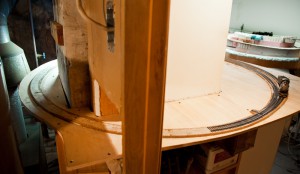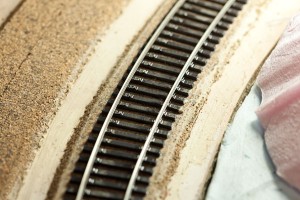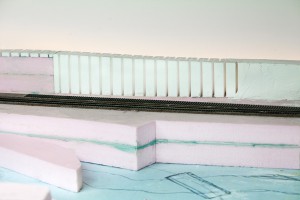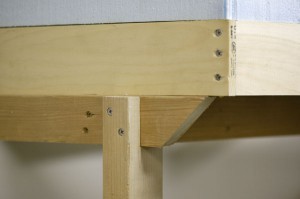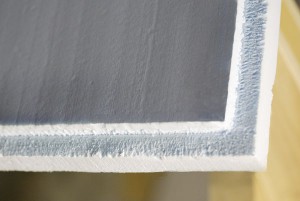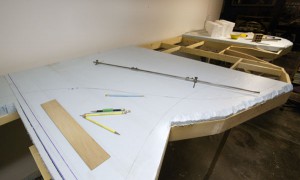Back after the holidays,
My plan is to write articles going forward on 4 to 5 general categories, and to keep moving ahead on all of the them, working on different parts of the layout. Obviously you have to do things in a certain order for some of the processes but I do enjoy seeing a small part become more detailed, more finished, as though that area is emerging from the simpler surroundings.
The first view shows most of the layout area as it stands now at the end of January 2011.That is except for the run through the furnace and hot water heater area of the basement, in photo 2, going through the wall.
Tag Archives: Track Work
Track and the Holidays
Busy working on getting some new track in place before my grandsons Cooper and Fletcher arrive.
A combination of Central Valley and Micro Engineering track and switches, with help from the afore mentioned Ribbonrail track gauges.
I hope everyone has a great holiday season, and I’ll see you next year
Lin’s Junction
Finally went to Lin’s Junction Hobby Shop in Lansdale PA on Saturday to pick up some ribbonrail radius track gauges.
Been wanting to go there after seeing their ads as part of the DC / DCC Dealers Association. Will be going back to switch over to DCC, hopefully in the coming year.
They really seemed to have a good selection of quality items, including the track gauges I was searching for, lots of variety in brands of track available, and as expected, DCC systems, decoders , etc.
Of course there was the mysterious derailment of a train with full size corn cob cargo in their outside display in front of the store. Perhaps full size squirrel intervention!
The Perils of Humidity
Jumping ahead a little just to relate an “oh no” realization about barge cement and the perils of east coast, Mid Atlantic basements and the changes in humidity and temperature. I laid a fair amount of Central Valley tie strips and Micro Engineering code 70 rail applied with barge cement. As you can see in the photo, the seasonal pressure to expand was too much for the barge to contain. To be fair, Central Valley’s new tie strips are molded with push over mechanical spikes and rail clamps, and this works very well. Sometimes the learning process does seem frustrating, but its all worth it. I have decided to use the NEW central Valley strips and also Micro Engineering code 70 flex track in hidden areas (tunnels,covered connectors, staging). I think it’s all an adventure worth taking.
The whole foam idea
In deciding to go with the foam concept as the base for the layout, I continued to use layers of foam to both build scenery support and with Woodland Scenics incline sets, to create the rising and falling of the track supports to follow the land elevations. All of this again with foam compatible construction adhesive.
Framing Decisions
I decided to build the basic structure for the layout a little differently than most of the typical L girder or grid structures recommended. After deciding on the basic track plan (which I’ll put up on a later post) I built a frame work hung on the wall in back, and supported by legs somewhat set back from the front. I did this in sections 4 foot wide of 2x3s. Setting on this under frame is a 1×4 four foot wide frame with slightly recessed smaller section interior grid to support 2″ thick extruded foam, which I routed to fit these 1×4 sections, and drop down to contact the smaller sections. This foam is glued to all the members of the 1×4 frame with foam compatible construction adhesive. This gives 4 foot wide sections which are then fastened to the 2×3 under frame with cleats. In theory I could, at a later time take the layout apart in sections if it had to be moved. I stress the “in theory” part.
In the photos you can see the aisle edges of the sections are contoured, because of the track plan and the scenery to follow.
The whole thing is really pretty sturdy and rigid, and even stand able if you put a piece of plywood to stand on, so to spread out the weight. I’m 6’4″ and 200 lb., and I have no trouble with this so it really is possible.
Some History
My Dad showing me about building things, to my high school starting of so called “perfect track work” on an early train layout with my friend Joe Braun, to my college summer employment at a precision machine shop, and through a number of years of designing, building and photographing sets for Knex toys box covers, I came back to starting a layout with hopefully some life experiences and skills, to make an interesting and fun layout, that I would like to share, as I go along. Hope you enjoy and share your experiences as well.
Bob Emmott


